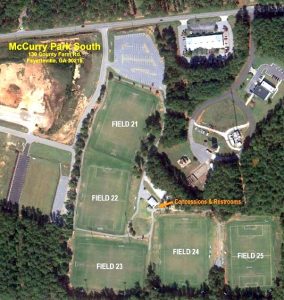Animals get added 25 days before put-down is considered; capacity crowd disappointed proposed revised shelter ordinance was halted
The July 13 meeting of the Fayette County Commission came with a packed house of passionate advocates believing that commissioners should have gone beyond an extension of the time animals housed in the Fayette County Animal Shelter could be euthanized. Taking up the cause is an online petition supporting the move to make the shelter an official “no-kill” facility.
Animal advocates at the July 13 meeting, approximately 200 in all, insisted on a position that makes the shelter a “no- kill” facility. In terms of the number of dogs euthanized and according to numbers provided by the county, the no-kill threshold was nearly achieved last year and is beyond that threshold to-date this year.
A no-kill shelter is one in which fewer than one in every 10 animals taken in is later euthanized.
The vote on the policy dealing with animal management and euthanasia was 4-1, with Commissioner Steve Brown casting the opposing vote on the policy that extended the time, from five days to 30, before a decision to euthanize can be made.
Though one agenda item, which included comments from two dozen citizens, the entire proceeding came essentially in two parts. Those included the discussion on the policy itself by citizens, commissioners and staff, and the motion made by Commissioner Randy Ognio which included a provision that work on an animal shelter ordinance be stopped.
It was the ordinance clause of the motion by Ognio that drew the loudest protest from Brown and the audience.
As for the adopted policy, it establishes a three-step approach to enhance adoptable animal management. The policy provides an additional 25 days past the currently-required 5-day hold period, creates a notification process, on Day 5 and Day 20, to humane and rescue agencies and establishes a capacity threshold of 75 percent of available cages.
Another amended provision of the policy, one from Commissioner Charles Rousseau, included the statement that the shelter will be managed in a way that considers the preservation of life.
Yet it was the inclusion of the clause in Ognio’s motion that work on an animal shelter ordinance be stopped, that brought a significant reaction from Brown and the audience.
Brown, along with humane and rescue groups, had been working for the past several months on an ordinance pertaining to the animal shelter. Brown said the proposed ordinance was to be included as an agenda item for the commission’s next meeting.
Ognio prior to the vote said he believed the new policy is “better than the one currently in place and that we are moving forward.” He said the policy needs to have a chance to work before moving ahead with the ordinance.
Brown said funding, including shelter expansion, is important, as is having the foundational documents, an ordinance and policies in place.
“I was a little bit shocked with the motion (clause) to stop working on the ordinance improvements because all the humane society and animal advocacy people, including our staff, we all agreed on 90 percent of the changes,” Brown said prior to the vote. “I don’t know why that should be stopped. This policy is what I would consider to be a band-aid.”
Following up on audience comments, Brown stated his belief that an animal advisory board is needed. He also said 75 percent available cages is too low, suggesting the 85 percent would be better and go from there. Brown also said he agreed with the humane society’s position.
“If this passes, all the ordinance changes we’ve been working on are now in the waste bin,” Brown said, again noting the volume of work on the proposed ordinance. “I am just really, really downhearted that (the ordinance) is going to be killed if this motion passes. There are a lot of things that go on that you don’t understand and you try to work through them. I’ve got a year and a half left. Man, I’m counting the days. I can’t take stuff like this anymore, where you work on something for all the right reasons and you don’t let it get on the agenda.”
Also prior to the vote, Rousseau complimented the volunteers for their work, then requested that the policy include that provision that the shelter work for the preservation of life.
Rousseau also told the audience the evening’s proceeding were why it is important to participate in the budget process.
“You missed it, by about 60 days. Because no one cared, and I use that (term) loosely, to come out and begin the process of advocating for dollars, resources, staff, all of those things that go through the budget,” said Rousseau, “We don’t see anybody. And then when a hot-button issue takes up, then all of a sudden we want to know where our priority is. It rests with you. We do everything in our power to educate the community, we put out the notices. What we do up here impacts this community. We’ve adopted a budget now, and we could have used your input at that particular time. So I encourage you to pay attention to the budget and what we do up here.”
Rousseau said the board needs to begin talking about future animal shelter strategies, including those for funding and capacity.
Brown responding to Rousseau said he believed “saying no one cared is way out of bounds,” adding that he had been working with advocacy groups since late January.
“And where was the budget request?” Rousseau asked. “We didn’t get a budget request.”
“It doesn’t matter,” Brown responded, noting the work of the animal advocacy groups and his work with those groups. “You’re going to negate the ordinance. We’ve let people down.”
Chairman Eric Maxwell just prior to the vote encouraged the audience to talk with each commissioner, adding that the commission’s vote is the beginning of the road, not the end.
“This is one aspect of the humane society (and other groups) and the county working together,” Maxwell said. “I hope the agencies will get together and work together and work (with county staff) to address this. There’s not a person in this room that created (the overpopulation of animals).”
Maxwell echoed earlier statements about the idea of having inmates help with the shelter, provided that is possible, and the pursuit of grants for the shelter.
Maxwell commended the audience for their decorum during the meeting, citing occasions in previous years when the same topic, one that is very emotional, had “horrible” results.
Just prior to the 4-1 vote, and immediately after it, there was no shortage of comments of exasperation from the audience.
With that, Brown left the meeting prior to the other agenda items being presented.
Ognio prior to the meeting on Thursday responded to questions about his inclusion of stopping work on the ordinance in his motion.
Ognio said Brown during the past several months had worked with advocacy groups, with the result of some of that work coming in the form of an ordinance developed by an attorney working with the group.
Some of the provisions of the ordinance, such as the size of cages, included items for which the county could not comply for budgetary reasons, Ognio said, necessitating the need for County Attorney Dennis Davenport to spend sufficient time to review the ordinance beyond the time he already allotted.
Ognio took the position that Brown should have officially asked commissioners to direct Davenport, and hence spend additional funds, to conduct a thorough review.
“Can one commissioner actually commit funds not budgeted without the consensus of the whole board?” Ognio asked.
While the lengthy discussion during and the after the motion and vote drew the most reaction from commissioners and the audience, the evening was not lost on the comments by staff and from the two dozen residents making their case to commissioners.
First up, County Administrator Steve Rapson outlined the five-part policy approach that included an initial evaluation to determine adoptability, a 5-day impoundment to locate the owner, a 25-day adoption period if the animal is adoptable, the two notification periods approved by commissioners and an evaluation of the shelter capacity with a 75 percent operational threshold.
Rapson provided an account of the percentages of dogs entering the animal shelter during 2016 and 2017 and what happened as a result. Those figures are prior to the policy change voted on by commissioners on July 13.
The shelter during 2016 received 573 dogs, of which 73, or 12.7 percent, were euthanized. That puts the no-kill rate at 87.3 percent, Rapson said, also noting that a shelter is considered “no-kill” with a 90 percent rate of animals saved.
Year-to-date figures for 2017 showed 250 dogs entering the facility. Of those, 17, of 6.8 percent, were euthanized. That equates to a no-kill save rate of 93.2 percent, he said.
Pertaining to the 17 dogs euthanized this year, Rapson said one was injured and euthanized at a veterinarian’s office.
Of the 16 dogs euthanized at the shelter, three were sick and/or injured while the remaining 13 were aggressive. The aggressive dogs were at the shelter an average of 35 days before being euthanized, according to county records.
Of the aggressive dogs, 11 were Pit Bulls, two were a Lab mix, one was a Husky-Shepherd mix and one was a Rottweiler. Six of the dogs were offered to rescue services but the county received no response, Rapson said.
It was noted by Rapson and during public comments that Pit Bulls get a bad rap.
Perhaps as cogent as any of those commenting on the issue was former school administrator Terry Martin, who spoke on behalf of fellow animal shelter volunteers.
“The (animal shelter) is the squeaky wheel that’s never squeaked,” Martin said. “It’s hard not to get emotional because we love these folks. The number of dogs that are adopted after that 100-day period is amazing. Those dogs are now contributing members to a family.

“It’s time for some change,” Martin continued. “It’s getting better and (director) Jerry (Collins) is doing the best he can. But it’s time to fork over some serious cash. The building is falling down.”
Martin continued, providing a list of the infrastructure issues with the animal shelter building.
“We have no strategic plan whatsoever for the facility,” he said. “Why, in God’s name, does any government entity today (not) have a strategic plan? Where are we going 12 months from now? Where are we going to be three years from now, where are we going to be five years from now? The volunteers are actually invested (in the animals) and they are there all the time. We need a facility that matches the needs of the citizens. It’s your responsibility to do that.”
Martin, on behalf of the volunteers, had three recommendations for commissioners.
Those included a 90-day moratorium on euthanasia except for illness and dangerous aggression, the establishment of an advocacy committee to develop recommendations for the commission and the development of a strategic plan for the facility.
Martin said the animal shelter is not adequate reflection of Fayette County.
“I would be embarrassed that this is the best this affluent county could do,” he said. “We’re better than this. I challenge you to work with us. We want to work with Jerry and we want to work with you. We’ll do whatever it takes to make this right. How is it that Clayton County and Coweta County can be so damn much better than us?”
Those remarks received the loudest and most prolonged applause of any of the meeting’s comments from citizens.
Commenting on the outcome of the meeting, Fayette County Humane Society President Stephanie Cohran in a July 14 statement said, “We will continue our efforts to help send the direction of our shelter towards no-kill. There is no reason why our county, as affluent and educated as it is, could not be a top notch no-kill shelter.”
“I was appalled at the underhanded tactics used, and the forced agenda item’s approval (removal) that was used,” Cohran said. “I urge each citizen to review the video of [the July 13] meeting to see for yourself how it was indicated that we (the animal advocates and the citizens), if we cared, would be working together for a solution. We were, and spent over six months trying to do so, to have it all thrown out the window (on July 13).”
Also at the meeting, commissioners approved $119,568 for the renovation of the animal shelter building. While both interior and exterior work will be performed, the renovation will also include the addition of a new fenced area in the rear of the facility to provide additional kennels for dogs brought to the shelter.
An online petition to “Make Fayette County Animal Shelter Kill-Free” had nearly 1,500 supporters at press time on Monday. The petition can be accessed at http://www.thepetitionsite.com/640/038/834/make-fayette-county-animal-shelter-kill-free/?taf_id=39311827&cid=fb_na#bbfb=697811955
The bad rap received by pit bulls is not a local issue, and the number of pit bulls received and euthanized at the Fayette animal shelter mirrors the figures in other parts of the county. A May 2015 report by the American Society for the Prevention of Cruelty to Animals (ASPCA) showed pit bulls and pit-type dogs with the largest intake at shelters and the largest number euthanized.
According to the ASPCA Comprehensive Animal Risk Database System, a review of 45 shelters was done for 2013 and 2014. The shelters included 24 municipal facilities and 21 nonprofit facilities.
In 2013, intake records showed 58,270 pit bulls arriving at shelters and with 30,866 euthanized.
In 2014, the numbers improved, yet there were 52,415 pit bulls taken at shelters and 25,136 euthanized.
The report can be viewed at http://aspcapro.org/blog/2015/05/27/climbing-out-pit
The agenda item can be viewed on the county website at https://livestream.com/accounts/4819394/events/6843918.












Leave a Comment
You must be logged in to post a comment.